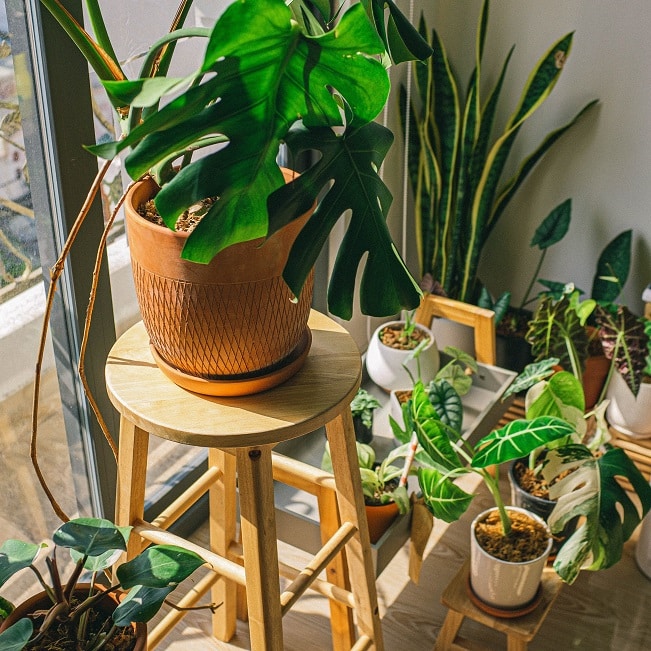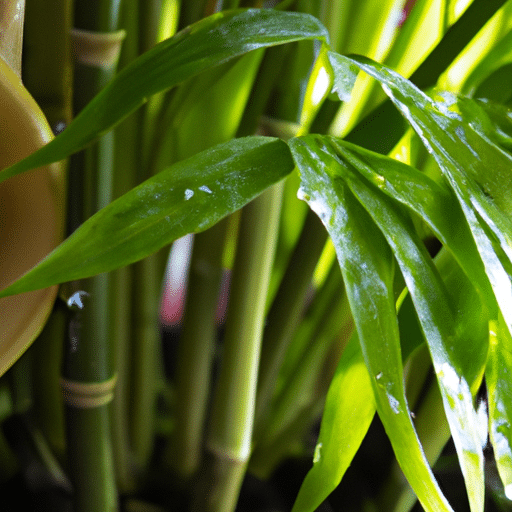Discover expert tips on how to support house plants. From watering schedules to ideal lighting, learn how to provide the perfect care for indoor greenery. Elevate your plant parenting skills with our comprehensive guide.
You love having house plants in your home, but sometimes they struggle to thrive. Don’t worry, we’ve got you covered with some invaluable tips how to support house plants. From providing the right amount of sunlight to watering them correctly, we’ll guide you through all the essential practices to ensure your precious leafy friends flourish in your indoor space. So grab your watering can and get ready to learn all the secrets to maintaining vibrant and thriving house plants!
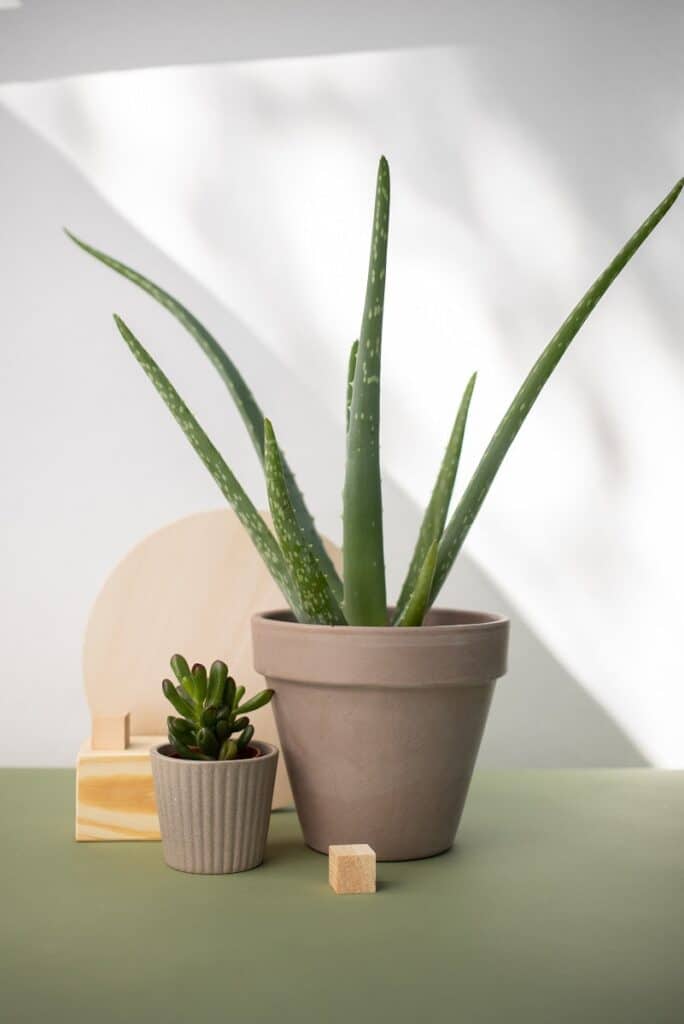
Understanding Different Types of House Plants
House plants are a wonderful addition to any home, bringing life and beauty indoors. However, not all house plants are the same. They come in various types, each with its own unique characteristics. One such type is succulents. Succulents are known for their thick, fleshy leaves and ability to store water. They are excellent for those who tend to forget to water their plants regularly.
Another type of house plant is the typical tropical plant. These plants are native to tropical regions and thrive in warm and humid environments. They often have large, broad leaves and vibrant colors, adding beauty to any space. Tropical plants require more care and attention compared to succulents but are worth it for the visual appeal they bring.
Flowering house plants are another popular choice among plant lovers. These plants not only bring greenery into your home but also add bursts of color with their beautiful blooms. Some popular flowering house plants include orchids, peace lilies, and African violets. Each type has its own specific care requirements to ensure they continue to bloom and flourish.
Ferns are yet another type of house plant that deserves attention. These plants are known for their delicate, feathery leaves and are excellent for adding a touch of elegance and freshness to your home. Ferns thrive in shady areas and high humidity, making them perfect for bathrooms or rooms with low light levels.
Steps to Choose the Right House Plants
Choosing the right house plants for your home depends on several factors. First, it is important to assess your home environment. Consider factors on how to support house plants such as the amount of natural light, humidity levels, and temperature fluctuations. These factors will help determine which plants are most suitable for your space.
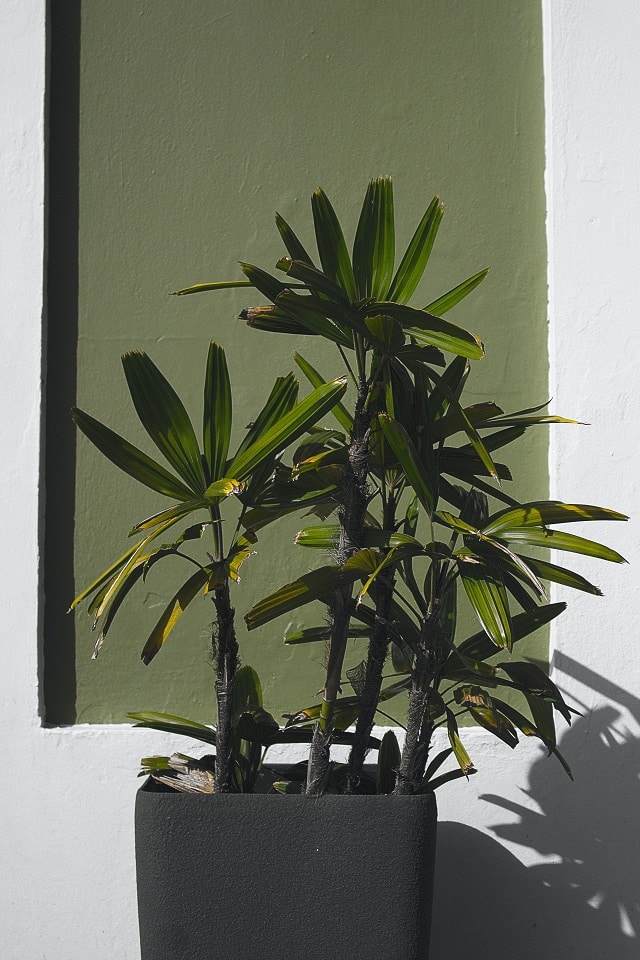
Next, consider the light availability in your home. Different house plants have varying light requirements, ranging from bright indirect light to low light conditions. Assess the amount of light each area of your home receives throughout the day to choose plants that can thrive in those conditions.
Your level of experience with house plants is also a crucial aspect to consider. If you are a beginner, it is best to start with low-maintenance plants such as succulents or resilient varieties like pothos or snake plants. As you gain more confidence and knowledge, you can try your hand at caring for more demanding plants.
Consider the size and growth potential of the plants you choose. Some house plants can grow quite large over time, while others remain compact. Make sure you have enough space in your home to accommodate the plant’s growth and consider whether you prefer smaller or larger plants in your space.
Important Aspects of Plant Care
Caring for your house plants involves several important aspects to ensure their health and longevity. The first aspect is watering. Each type of plant has specific water requirements, so it is essential to understand their needs. Some plants prefer to be watered thoroughly and then left to dry out between watering, while others thrive when the soil is kept slightly moist. Finding the right balance is key.
Feeding your house plants is another important aspect of care. Plants need nutrients to support their growth and overall well-being. Different plants require different types of fertilizers and feeding schedules, so it is important to understand the specific needs of each plant in your collection.
Pruning is also an essential part of plant care. Pruning helps maintain the shape and appearance of your plants, as well as promotes healthy growth. Regular pruning removes dead or dying foliage, encourages branching, and prevents the plant from becoming overgrown.
Repotting is necessary when a plant outgrows its current container. Repotting allows for fresh soil and additional space for the plant’s roots to grow. It is important to repot your plants when needed to prevent root-bound conditions and ensure they have enough room to thrive.
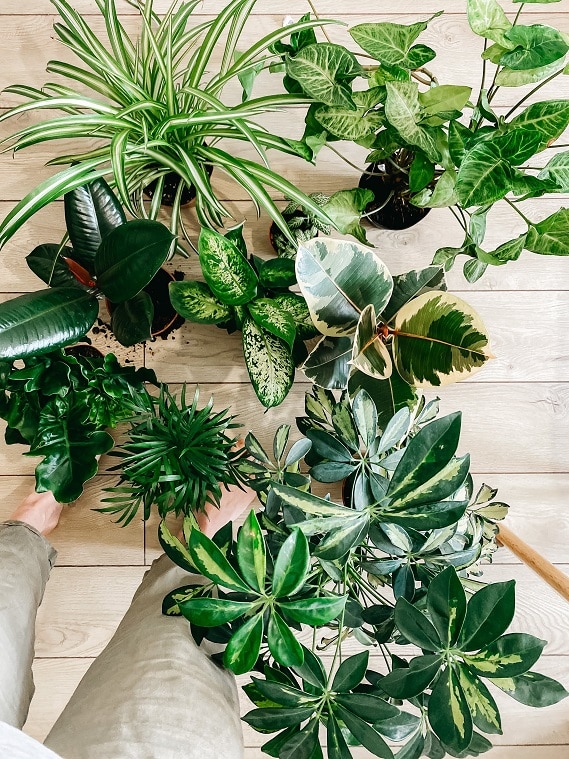
Creating the Most Ideal Environment
To create the most ideal environment for your house plants to thrive, there are a few key factors to consider. Adequate light is essential for plant growth. Different plants have specific light requirements, so it is important to place them in locations where they can receive the appropriate amount of light. Rotate your plants periodically to ensure all sides receive equal light exposure.
Maintaining proper humidity levels is crucial, especially for tropical plants and ferns. These plants thrive in environments with higher humidity, so it may be necessary to increase humidity levels by misting the plants or using a humidifier. Regularly monitor the humidity levels to ensure they stay within the optimal range for your plants’ needs.
Temperature also plays a vital role in plant health. Most house plants prefer temperatures between 60-75°F (15-24°C). Avoid placing your plants near drafts or in areas with extreme temperature fluctuations, as this can cause stress and damage to the plants.
Lastly, providing adequate space for growth is essential. As your plants grow, they will need space to spread their roots and foliage. Avoid overcrowding your plants and ensure they have enough room to grow and thrive.
Watering House Plants Correctly
Watering your house plants correctly is crucial to their health and well-being. Determining the water requirements of your plants is the first step on how to support house plants. Some plants prefer to be watered deeply once the soil has dried out, while others prefer a more consistently moist soil. Research and understand the specific watering needs of each plant to avoid overwatering or underwatering.

When it comes to watering techniques, it is important to water the soil directly rather than the foliage. This allows the roots to absorb water more efficiently. Use a watering can or a hose with a gentle spray nozzle to avoid damaging the plants or causing soil erosion.
Knowing when to water your plants is essential. One common method is to check the moisture level of the soil by inserting your finger into the soil up to the first knuckle. If the soil feels dry, it’s time to water. However, this method may not be accurate for all plants, so it is important to research and understand the specific needs of your plants.
Both overwatering and underwatering can harm your plants. Overwatering can lead to root rot and fungal diseases, while underwatering can cause dehydration and stunted growth. Monitor your plants closely and adjust your watering routine as needed.
Feeding Your House Plants
Feeding your house plants is important to ensure they receive the necessary nutrients for healthy growth. Understanding plant nutrients is essential in choosing the right fertilizer for your plants. The three primary nutrients plants need are nitrogen (N), phosphorus (P), and potassium (K). Nitrogen promotes leafy growth, phosphorus supports root development and flower production, and potassium strengthens the overall health of the plant.
Choosing the right fertilizer depends on the specific needs of your plants. There are various types of fertilizers, including organic and synthetic options. Some plants may require specialized fertilizers, such as acid-loving plants that thrive with acidic fertilizers.
Knowing the right feeding schedule is crucial on how to support house plants. Some plants require frequent feeding, while others only need fertilization during specific seasons. Research and understand the specific feeding requirements of your plants to avoid overfeeding or underfeeding.
Recognizing signs of underfeeding and overfeeding is important to adjust your feeding routine accordingly. Underfed plants may show stunted growth, pale leaves, or overall weakness. On the other hand, overfed plants may exhibit burnt or yellowed foliage, wilting, or even plant death. Pay attention to your plants’ appearance and adjust fertilizer application as necessary.

Managing Common House Plant Pests
Unfortunately, pests can be a common issue when it comes to house plants. Identifying common pests is the first step in controlling and managing infestations. Common house plant pests include aphids, mealybugs, spider mites, and fungus gnats. Each pest has its own distinct appearance and feeding habits, so it is important to identify them accurately.
Controlling pests naturally is often the preferred approach. There are various natural methods to combat pest infestations, such as using insecticidal soaps, neem oil, or introducing beneficial insects like ladybugs. Regularly inspect your plants for any signs of pests and take immediate action to prevent the infestation from spreading.
In some cases, the use of pesticides may be necessary. However, it is important to exercise caution and follow the instructions provided by the manufacturer. Only use pesticides specifically labeled for house plants and take the necessary precautions to protect yourself and the environment.
Preventing future infestations is key to maintaining healthy house plants. Regularly inspect new plants before bringing them indoors, isolate any new additions, and keep your plants clean and free from debris. Good plant hygiene and proper care will help create an environment less favorable for pests.
Addressing Common House Plant Diseases
Just like any other living organism, house plants are susceptible to diseases. Identifying disease symptoms is crucial in addressing and treating the issue promptly. Common plant diseases include fungal infections, bacterial infections, and viral infections. Symptoms may include wilting, leaf spots, discoloration, mold or mildew growth, and overall decline in plant health.
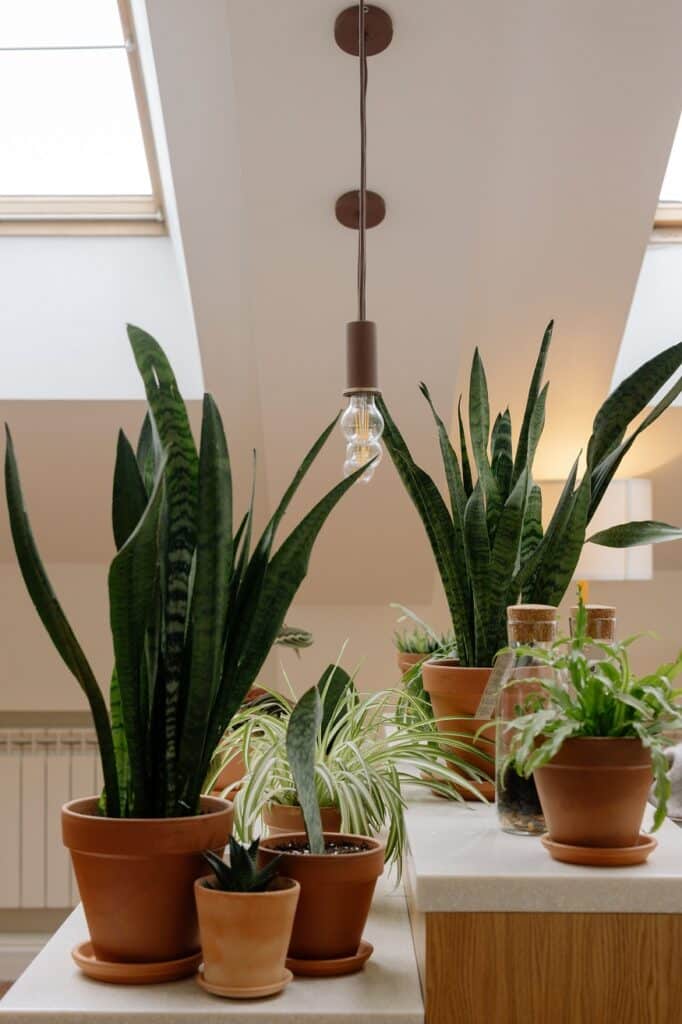
Treating common plant diseases often involves removing affected areas, improving air circulation, and adjusting environmental conditions. Fungal diseases can be treated using fungicides, while bacterial infections may require the removal of infected parts and disinfection.
Preventive measures play a significant role in minimizing the risk of plant diseases. Avoid overwatering, maintain good air circulation, and keep your plants clean and free from debris. Regularly inspect your plants for any signs of disease and take immediate action on how to support house plants.
In some cases, it may be necessary to consult with a professional, such as a plant pathologist or horticulturist, to accurately diagnose and treat complex plant diseases. They can provide expert advice and help restore your plants’ health.
Pruning and Repotting Your House Plants
Pruning and repotting are essential tasks to ensure the overall health and aesthetics of your house plants. Knowing when to prune your plants is important. Pruning helps remove dead or dying foliage, encourages branching, and maintains the desired shape of the plant. Regular pruning promotes healthy growth and prevents overcrowding.
When pruning, use clean and sharp tools to prevent the spread of diseases. Make clean cuts just above a node or bud. Remove any dead or damaged parts, as well as any branches that are crossing or rubbing against each other.
Repotting your plants is necessary when they outgrow their containers or when the soil becomes depleted. Signs that your plant needs repotting include roots growing out of the drainage holes, stunted growth, or the soil drying out quickly after watering. When repotting, choose a slightly larger pot with good drainage and use fresh, well-draining soil.
To repot your plant safely, gently remove it from its current container, loosen the root ball if necessary, and place it in the new pot. Fill in the gaps with fresh soil, firming it gently around the roots. Water the plant thoroughly after repotting to settle the soil.
Advanced House Plant Care
For those who want to take their house plant care to the next level, there are advanced techniques to explore. Understanding the plant growth cycle is crucial in providing the optimal conditions for growth. This includes providing the right amount of light, temperature, and nutrients during each stage of the growth cycle.

Breeding house plants is another exciting possibility. Breeding involves cross-pollinating plants to create new varieties with desired traits. This process requires careful planning, knowledge of the plants’ reproductive mechanisms, and patience.
Propagating house plants allows you to create new plants from existing ones. This can be done through methods such as stem cuttings, division, or leaf cuttings. Propagation is a cost-effective way to expand your plant collection and share plants with friends and family.
Creating a miniature indoor garden is a fun and creative way to display your house plants. With careful selection and arrangement of various plant types, containers, and decorative elements, you can create a charming and unique indoor garden that brings joy and beauty to your home.
Conclusion
Taking care of house plants can be a fulfilling and rewarding experience. By understanding the different types of house plants, assessing your home environment, providing proper care, and creating an ideal growing environment, you can enjoy healthy and thriving plants that bring beauty and life to your living space. With the right knowledge and a little love, your house plants will flourish for years to come. So, learn on how to support house plants.

